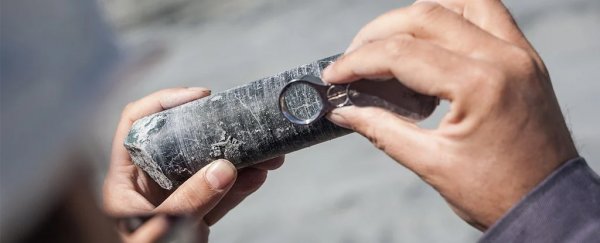Rare-earth elements are crucial components in all kinds of electronics, from smartphones and broadband cables to wind turbines and electric cars. But coming up with useful compounds that can expand our practical use of rare-earths is notoriously difficult, with unpredictable results.
Now, scientists have come up with a clever way to help the search of new rare-earth compounds: A newly developed artificial intelligence system with predictive powers that will take us beyond what would be possible for humans in the lab.
The type of AI used here is machine learning: as the name suggests, it's where software studies a database of information (in this case on rare-earth compounds), recognizing patterns and correlations that then enable it to spot new potential matches for said database.
" Machine learning is really important here because when we are talking about new compositions, ordered materials are all very well known to everyone in the rare-earth community," says materials scientist Prashant Singh, from the Ames Laboratory at Iowa State University.
"However, when you add disorder to known materials, it's very different. The number of compositions becomes significantly larger, often thousands or millions, and you cannot investigate all the possible combinations using theory or experiments."
In materials science, order and disorder refer to how particles are arranged in the material (for example, in a perfect, crystalline grid or in a more chaotic, scattered arrangement), which directly influences the properties and uses of said material.
In this case, the machine learning model was built using a rare-earth database and some ideas from density functional theory (DFT), which deals with the analysis of material structures – perfect for this kind of research.
The way the model was built means that hundreds of permutations can be tested quickly, and then the phase stability of each one can be assessed. In other words, the AI is able to judge whether or not a rare-earth combination is going to be viable, e.g. not fall apart.
These calculations are then supplemented with additional information from the web – found through custom-made algorithms – before finally being validated and run through several checks to make sure they remain in the realm of reality.
"It's not really meant to discover a particular compound," says materials scientist Yaroslav Mudryk, from the Ames Laboratory. "It was, how do we design a new approach or a new tool for discovery and prediction of rare-earth compounds? And that's what we did."
Experimental data can also be fed back into the machine learning system, further improving its accuracy and reducing the chance of mistakes, such as coming up with rare-earth compounds that wouldn't actually work.
Right now the model is still being assessed and tweaked before it gets on with the task of actually looking for these rare-earth compounds, but the researchers are promising that this is just the beginning for the newly developed system.
Even better, the techniques that the team is using here should also work in the search for other elusive kinds of materials in the future. Eventually, we shouldn't have to rely so much on serendipity to make these sorts of discoveries.
"Our approach will be useful in discovering new and complex rare-earth compounds with new functionalities," conclude the researchers in their published paper.
The research has been published in Acta Materialia.
